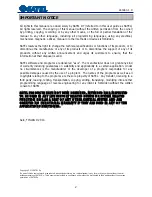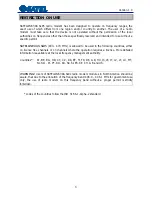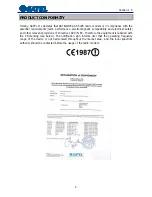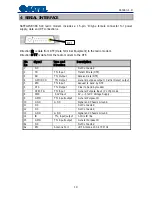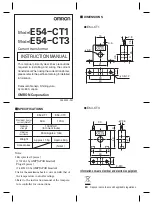
Version 1.0
11
5
RADIO COMMUNICATION RANGE
UHF radio signal propagates primarily line of sight, and only slightly bends behind the visible
horizon due to inhomogeneous atmosphere. Therefore any obstacle, like a hill, a building etc.
blocking the signal path, may cause significant loss to the signal strength and limit very much
the radio communication range.
In case the line of sight connection is blocked, UHF radio signal may reach the receiving
antenna through reflections from mountain walls, buildings or other infrastructure. Sometimes
the signal is refracted from sharp edges and find its way behind the obstacles, too. However,
reflection and diffraction conditions tend to vary in the course of time causing large variation on
the signal strength and thus risk of loosing temporarily the radio connection.
In order to maximize the radio range, it is recommended to pay attention to the following items
in the order of significance.
1. Antenna height
Whether the line of sight conditions can be obtained by raising the antennas, the radio range
will be significantly extended.
2. Antenna gain and radiation pattern
Whenever possible, directional antennas should be used to concentrate the signal coverage to
the area where the receiver operates. It should be also noted that any metal structures very near
to the antenna violate the radiation pattern of the antenna.
3. RF cable type
Low loss RF cable should be chosen for longer feeder lengths from the radio to the antenna to
avoid extra signal loss. In addition, connectors have to be properly installed, as well as any
damage to the cable structure must be avoided.
4. RF interference
Alien radio transmitters may interfere the signal reception. In that case, the distance of the
receiver antenna to the interfering transmitter must be increased or an RF filter added to the
receiver input.
5. Radio transmitter power and receiver sensitivity
TX power and RX sensitivity together set the magnitude of the entire link budget.
As a conclusion, terrestrial UHF radio communication range is heavily affected by local
topographic, vegetation and infrastructural conditions, and therefore only general guidelines
can be given to estimate the range simply based on the system hardware (radios, antennas,
cables etc.).


